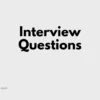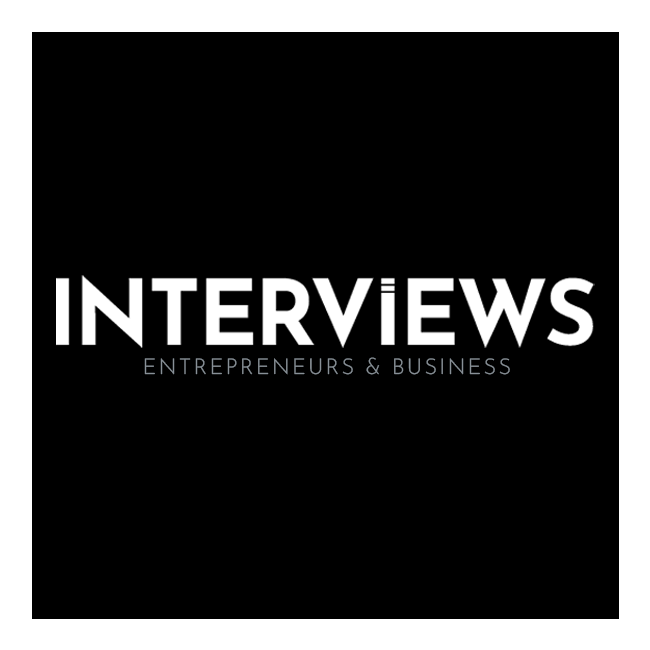Are you preparing for an upcoming interview and feeling a bit anxious? You’re not alone! Many job seekers find themselves in the same boat when faced with behavioral interview questions. However, mastering the STAR method can significantly boost your confidence and increase your chances of landing the job.
The STAR method—which stands for Situation, Task, Action, and Result—provides a structured approach to showcase your past experiences in a compelling way. Let’s dive into how you can effectively use this powerful technique to impress potential employers and secure your dream role!
What is the STAR Method?
Okay, so let’s talk about this nifty little tool called the STAR method, right? If you’ve ever sat in a behavioral interview and felt your brain do cartwheels when asked to “tell me about a time when…” then this method is for you. It stands for Situation, Task, Action, and Result. Just a fancy way to help candidates share real stories from their past that demonstrate how they tackled situations in the workplace. Trust me, when I first learned about it, I thought, “Where was this when I was applying for my first job?”
What’s super cool about the STAR method is that it gives you a structure to articulate your experiences clearly. No one wants to ramble on and on about a past experience that leads nowhere. This method helps you lay out the groundwork:
- Situation: Set the scene. What was happening?
- Task: What was your role? What goal were you working toward?
- Action: What steps did you take? Get into the nitty-gritty!
- Result: What happened? Did you knock it out of the park, or was it an epic fail?
I vividly remember my first behavioral interview—totally nerve-wracking, right? The interviewer hit me with that classic, “Describe a situation where you had to handle pressure.” My mind went blank! But had I known about the STAR method back then, I could’ve strutted in prepared and ready to shine like a diamond.
Why is STAR Important in Behavioral Interviews?
Behavioral interviews are all about digging into your past to predict your future behavior. Sounds a bit like fortune telling, huh? But really, the idea is if you’ve handled situations well before, you’re likely to do it again. So, when candidates use the STAR method, it essentially helps them portray themselves as capable and effective team members. Plus, it gives employers tangible examples to latch onto instead of vague claims like, “I work well under pressure.” No one remembers those!
The STAR method isn’t just for interviews; it’s a skill that can be polished for all kinds of storytelling scenarios. I mean, whether it’s crafting an engaging presentation or even sharing a fun story at a party (a little off-topic, but stick with me), it’s all about how well you can communicate your experiences!
So, next time you’re gearing up for an interview, think of it as a storytelling session. Just use that STAR framework in your back pocket, and you’ll be ready to stoke the fires of your prospective employer’s interest. They can follow along with your tale of triumph (or lessons learned), making it easier for them to see how you’d fit into their crew.
Breaking Down the STAR Components
Situation
- You know, setting the stage for your story is super important. It’s like giving the audience a preview of a movie; they gotta know what to expect! When I’ve had the chance to prepare for interviews, I realized how much detail matters in laying out the context. It helps the interviewer visualize the challenge you faced.
- Now, how do you pick the right situation? Think back to your experiences—was there a time when you really shone? Maybe it’s that project you worked on that was a total game-changer or a time you had to solve a tricky problem. I usually jot down a list of experiences that highlight skills relevant to the job I’m applying for. Why not use that vocab they like in the job description?
- But hey, a big pitfall is getting too caught up in the details. I once rambled on for way too long about a team meeting that went south, and the interviewer looked like they might doze off! Keep it focused and relevant—avoid the urge to share all the gossip or inside jokes!
Task
- Here’s where you lay out what your objective was in that situation. What role did you take on? I remember a time I led a small team on a project, and my focus was all about streamlining our approach.
- Being specific is crucial! Instead of saying, “I was part of the team,” I realized saying, “I coordinated communication between departments” made a bigger impact. It gives the interviewer a clear picture of your contributions.
- And don’t forget—having multiple examples of tasks can help. You might face a question that calls for leadership, but maybe another that focuses on problem-solving. Having a repertoire of tasks prepared? Game-changer!
Action
- Now comes the fun part—discussing the specific actions you took. This is where you can really show off your skills! I had this experience where the team was struggling with deadlines. I implemented a new project management tool, which was super effective.
- It’s crucial to highlight the skills you used during this phase. Like how you ran a brainstorming session or perhaps how you managed conflicts. I often emphasize not just what I did but how I came to those decisions.
- And let’s be real—don’t shy away from mentioning teamwork. A project I was on had a phenomenal outcome because we all worked together. Make sure to show how your role fit into the team dynamics—really helps paint a complete picture!
Result
- Ahh, the big finish—communicating the outcomes! This is your chance to shine! When I made a change to our team’s approach, it wasn’t just a minor improvement; it resulted in a 40% increase in efficiency. Can you say impressive?
- Quantifying your achievements really makes your stories pop! Instead of saying “We did better,” it’s more powerful to say “We improved our sales by 30% year-over-year.” Numbers stick in people’s minds.
- And while you’re at it, share lessons learned or how you’d apply the experience in future scenarios. It shows that you’re reflective. I once had a setback on a project, but it taught me to always have a Plan B. It’s that growth mindset that employers dig!
More — Problem Solving STAR Method Example
Practical Examples of STAR Method in Action
You know, preparing for interviews can feel like gearing up for a rollercoaster ride—exciting yet terrifying! One of the most useful frameworks I’ve picked up is the STAR method. It’s simple yet powerful, like having a secret sauce for answering behavioral questions. Alright, let’s break it down with some examples!
Conflict Resolution
Picture this: I was working in a team project where tensions were running high. Two of my teammates weren’t seeing eye to eye and it was kinda awkward for everyone. Here’s how I used the STAR method:
- Situation: In a project rollout meeting, there were differing opinions on the design approach that were causing friction among team members.
- Task: I needed to mediate the discussion and find common ground to keep our project on track.
- Action: I took a step back, facilitated a round-table discussion where each person could share their perspective without interruption. I also encouraged brainstorming to merge ideas.
- Result: By the end of the meeting, we agreed on a hybrid approach that everyone felt good about. The project not only met its deadline but also received praise for its innovative design.
Remember, if you’re in a role where teamwork is key, don’t hesitate to practice this kind of example. It shows your capacity for leading and resolving conflicts.
Meeting Tight Deadlines
- Situation: Just a week before the launch, the client requested major changes to the website content.
- Task: My job was to ensure that the revisions were done without compromising quality and still meet that original launch date.
- Action: I organized a team “war room” where we worked collaboratively day and night, developing a schedule that ensured everyone knew their piece. I even made sure to check in frequently to address any roadblocks.
- Result: We managed to roll out the updated content on time, and the client was super impressed. They even referred us to their partner company!
For you folks in industries like marketing or project management, having a nail-biting deadline example will definitely work in your favor. Just customize your stories, that’s critical. Think about the role you’re going for. Is it sales? Solution-oriented scenarios work wonders. Are you going for a creative role? Showcase your innovative problem-solving skills. You got this!
Common STAR Interview Questions
Okay, so let’s talk STAR interview questions. The STAR method (which stands for Situation, Task, Action, and Result) is kinda like your trusty map when you’re venturing into the wild unknown of interviews. Trust me, I’ve had my fair share of interview facepalms, and I’ve learned that having structured responses gives you a killer advantage. Let me break down five common STAR interview questions you might encounter.
- Tell me about a time you faced a conflict at work. Ah, the classic conflict question! Storytime, y’all: I once had a coworker who was, let’s say, absolutely convinced their way was the only way. We were working on a project and, oh boy, tensions flared. I calmly explained my point of view, trying to meet halfway, and guess what? We ended up combining our ideas, and the project turned out way better! See how I used STAR there? You need to show how you approach conflict, not just tell them about it.
- Describe a situation where you had to meet a tight deadline. Man, I remember this one time when I had a project due at noon, and I got the brief at 10:00 AM. Panic mode, activate! Luckily, I quickly laid out a plan—brainstorming, jotting down key points, and just focusing. Honestly, it felt like a movie montage. I hit send with just a minute to spare. The takeaway? Keeping calm under pressure can make a huge difference!
- Provide an example of a time you showed leadership. Funny story – I was leading a team for a charity event, and the venue fell through last minute! Yikes! I didn’t let my team see me sweat. I rallied everyone, delegated tasks, and we found a new place in no time. It ended up being a fantastic event, raising more funds than expected! It’s all about stepping up, right?
- Tell me about a mistake you made and what you learned from it. Oh, let me tell you about that time I sent an email to the entire department with a typo in the subject line. Embarrassing, right? But here’s what I learned: we’re all human, and it’s okay to mess up. I acknowledged it, laughed it off, and promised to double-check in the future. Just being real is what counts!
- How do you prepare personalized responses for each question? You might wonder how to prep for these kinds of questions. Start by reflecting on your past experiences—consider those “aha” moments where you handled tough situations or learned something valuable. I recommend jotting them down! Then, when it’s showtime, you can use those notes to structure your responses effortlessly!
Additional Tips for Using the STAR Method Effectively
You know, practicing for interviews can feel like a marathon, especially when you’re trying to master the STAR method. I remember preparing for a big job interview a while back, and I thought I was ready… until the questions came flying at me like a water balloon fight gone rogue!
Mock Interview Magic
One of the best ways to get the hang of the STAR method is through mock interviews. Grab a friend or even your dog (I swear, they make great listeners) and run through potential questions. Here’s how to do it:
- Pick a few common behavioral questions like, “Tell me about a time you faced a challenge.”
- Take turns playing interviewer and interviewee to get a feel for both sides. It’s kinda fun, trust me!
- Have your buddy give you feedback on your answers, like what could’ve been better or if you skipped a key part.
Every time I practiced this way, it felt a little less daunting. And honestly? It really helps to know you’re not alone in this process.
Time Management in Interviews
Now, let’s chat about time, because it can be your best buddy or your worst enemy during interviews! When you’re using the STAR method, staying concise is key. There was this one time I got so into my story that I almost lost the interviewer’s interest, and trust me, you don’t want that!
- Practice answering in about two minutes. Sounds tight? It is, but it keeps your answers crisp.
- Time yourself during mock interviews, so you get a sense of pacing.
- Watch out for tangents! It’s super easy to wander off when sharing experiences.
Create Your STAR Cheat Sheet
Creating a cheat sheet is like having your secret weapon in your back pocket. Just jot down the main points of your stories in the STAR format. I did this before one interview and it really helped me stay on track. Here’s what I’d suggest:
- Write down each situation, task, actions, and results in bullet points for quick access.
- Keep it simple! Use keywords that trigger your memory and remind you of the details.
- Practice looking at your sheet without reading verbatim. You wanna sound natural, not scripted.
If you keep this cheat sheet handy, it can really calm those pre-interview jitters. And let’s be real, who doesn’t want to walk in feeling like they’ve got a winning game plan?
Real-Life Success Stories
You know, I remember the first time I heard about the STAR method. I was sitting in on a friend’s interview prep session, and I was totally struck by how effective it could be. Turns out, a lot of folks have had success with this method, and their stories are incredibly inspiring. Like my buddy Jen—she was super anxious about her job search after college. But once she discovered the STAR method, everything changed!
- Jen’s Big Break: She landed an interview for a marketing position. Instead of stressing over the typical “tell me about a time” questions, she used the STAR method to tell a story about how she revitalized a floundering campus event. By emphasizing her actions and the results, she wowed the interviewers. She got the job and still tells anyone who asks how STAR helped her shine!
- Mark’s Leadership Triumph: Then there’s Mark, who was transitioning from teaching to tech management. With no direct experience, he used STAR to pull out examples from his teaching journey, showcasing his leadership in classroom projects. The panel loved it! One of the interviewers even said, “Your story shows how you lead through challenges.” Isn’t that beautiful?
Testimonials Speak Volumes
Hearing those real-life applications is truly eye-opening. One candidate stated, “Using STAR helped me connect my past experiences to my future role. I didn’t just answer the questions; I told them a compelling story that left a mark.” And honestly, isn’t that what interviews should be? Anecdotes that stick with the interviewers!
Another success story came in a casual chat I had with a local business owner. She said she always looks for candidates who can articulate their past using STAR. “It’s not just about the answer; it’s how they convey that experience. A good STAR story says a lot about who you are,” she explained. Now, isn’t that some solid advice? Pulling from our past can sometimes be the biggest key to moving forward! So next time you preppin’ for an interview, think about your own narrative. You might just have a story that’s waiting to be told.
Conclusion
In conclusion, mastering the STAR method is your ticket to effectively communicate your experiences during interviews. By structuring your responses with clarity and purpose, you can impress hiring managers and stand out among the competition. Ready to ace your interviews? Start practicing with the STAR method today! And don’t forget to download our printable resources for easy reference!





